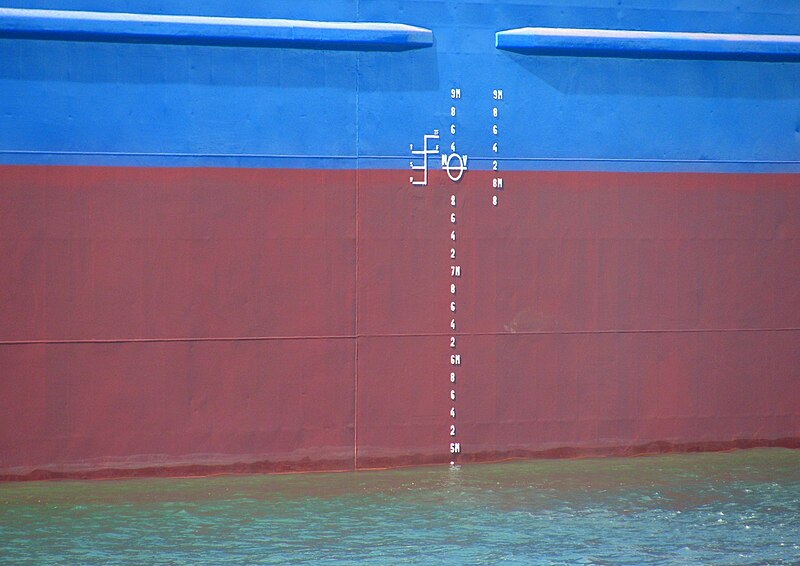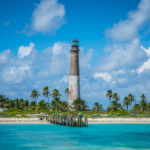Do you ever question the significance of the term “Plimsoll line” and its meaning? While those in the shipping field are likely well-versed in this term, others may not be as familiar. Perhaps you have noticed the lines on a ship’s sides just above the waterline. These are known as Plimsoll lines and have a crucial purpose in determining the safe weight and load capacity of a vessel, also known as a load line.

What Exactly is a Plimsoll Line/Load Line
The Plimsoll Line, also known as waterlines or load lines, is a horizontal line found on a ship’s hull that indicates the depth of the ship and also indicates the maximum depth the ship may reach safely when it is loaded with cargo. The Plimsoll line, which is painted on the side of the vessel, is a line that would disappear should the ship be overloaded, and considers the varying conditions, as well as the ship’s location. The position of the Plimsoll lines depends on the time of year, type of cargo, dimensions of the ship, and water densities encountered in all the areas the ship travels to. Thus, a freshwater load line will differ from the Plimsoll mark applicable in tropical waters. Either way, it serves as a reference mark located on the hulls of cargo vessels.
The History of the Plimsoll Line/International Load Line
Member of the British Parliament, Samuel Plimsoll (1824-1898), was the one who established the Plimsoll Line and introduced it as a law. The purpose of the law was to protect seafarers, and Plimsoll fought long and hard to pass the Plimsoll Line law in the English Parliament. Vessel overloading was a real threat to maritime safety and caused numerous ships and crews to sink in rough weather and seas. 411 Ships sank around the United Kingdom coastline between 1873 and 1874, resulting in the death of 506 people.
Poor repair and ship overloading led to so many dangerous circumstances that these ships became known as Coffin Ships. Because so many sailors were opposed to boarding Coffin Ships, they were often imprisoned on the grounds of desertion.
Despite knowing how dangerous it was to overload a ship, many ship owners were willing to take the risk because of the substantial profits they stood to make from selling large amounts of cargo overseas. These ship owners didn’t run the risk of losing money over lost cargo because if the ship sank, they would simply claim their money back from insurance.
Originally, Samuel Plimsoll wrote a book concerning the devastating repercussions if a ship was overloaded. As he investigated, Plimsoll soon came to realize that the issue was much greater than he initially expected. When he started his campaign, he got the attention of many ordinary people who found his book fascinating. Consequently, a Royal Commission on Unseaworthy Ships was issued to investigate the evidence and put forth practical changes.
After various defeats in parliament, Samuel Plimsoll didn’t tire in his fight until the Unseaworthy Ships Bill was established, The bill mandated the marking of a ship’s sides with a horizontal line.
Eventually, Plimsoll persuaded parliament to pass the Unseaworthy Ships Bill into law, and in 1876, Plimsoll line or load lines became compulsory. In 1976, this act was designated the Merchant Shipping Act, and in 1906, foreign ships entering British ports were also required to have a Plimsoll line.

Why is the Plimsoll Line Needed?
The Plimsoll line needed to be established to clarify the cargo load that is safe for merchant ships to carry while having a safe and smooth sailing. The sea level should stay either on or below the marked load line because if cargo vessels exceed the maximum depth, sailing becomes severe unsafe, and vessel overloading increases the probability that the ship may sink.
When vessels neglect to determine the appropriate Plimsoll Line needed for the voyage to sail safely and indicate it on the port and starboard hulls of ships, they are effectively disregarding load line rules, and the entire crew, including the ship’s captain, can get into significant trouble.
Why are Plimsoll Lines Useful?
There is no standardized maximum height to which a ship may be safely immersed, but the maximum depth of the vessel varies based on the surrounding conditions:
- The type of cargo on the vessel
- The ship’s dimensions
- The various water densities encountered in port as well as in the open ocean
- The time of year
Taking all the above-mentioned factors into account, the ship’s captain can determine the correct load line, indicating the depth at which the ship may be safely immersed when the cargo is loaded.
The designated load limits are established based on every type of environment and include the following levels:
- T (Tropical load line)
- TF (Tropical Fresh Water Load Line)
- F (Fresh Water Load Line)
- WNA (Winter North Atlantic Load Line)
- W (Winter Load Line)
- S (Summer Load Line)

Conclusion
A ship’s Plimsoll line effectively indicates how heavily the ship may be loaded to ensure safe sailing. Not adhering to the international load line rules could mean that hundreds of crew members and passengers suffer from the negligence of the ship’s captain, and the ship may well sink.
The Plimsoll line is a practical way of mitigating any risks involving heavy cargo and ensuring the safety of both the ship and those who board it.






